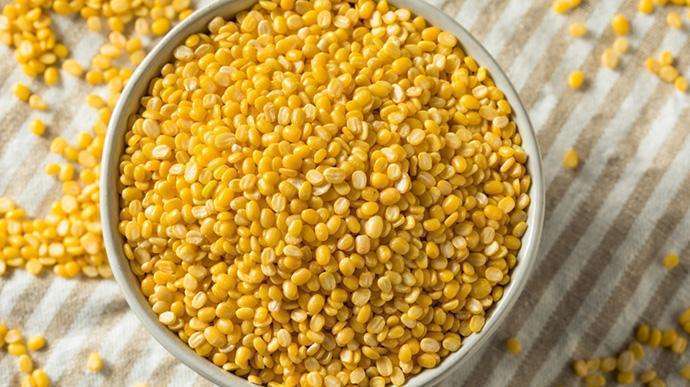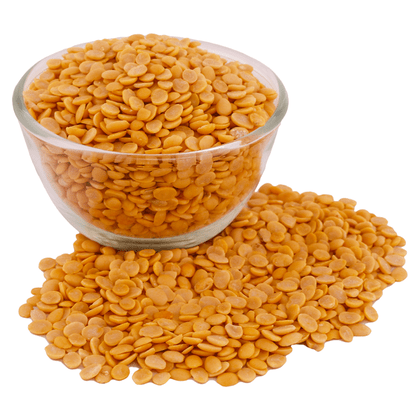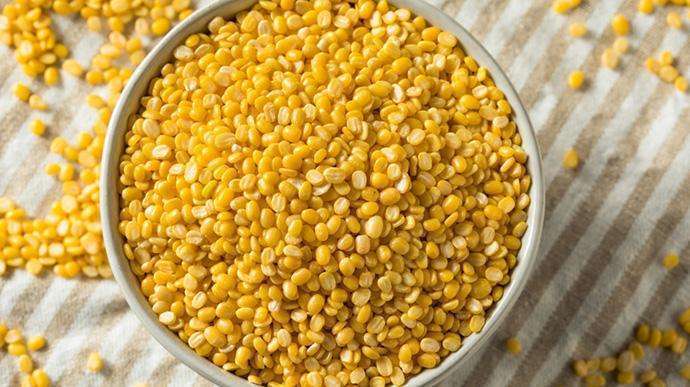The Open Magazine
Delicious Keto Recipes for a healthy lifestyle
Moong Dal And Toor Dal
Difference Between Moong Dal And Toor Dal. If you have ever wondered what the differences between these two types of dal are, look no further! We explore the nuances of Moong Dal and Toor Dal in this concise post. If you have ever wondered what the differences between these two types of dal are, look no further! We explore the nuances of Moong Dal and Toor Dal in this concise post.
What are Moong Dal and Toor Dal?
Moong Dal and Toor Dal are members of the legume family. They are dried, split beans that vary in colour, nutrition and taste. Moong Dal is a small, yellowish-green lentil with a mild flavour and soft texture. Toor Dal is a large, tan-coloured lentil with an earthy flavour, high nutritional value and a firmer texture than Moong Dal. Moong Dal is an excellent source of protein and dietary fiber. It takes less time to cook than Toor Dal, as it doesn’t require pre-soaking. Moong Dal is also lower in fat and calories than Toor Dal due to its lighter colour. Toor Dal is high in protein and essential vitamins like folate, iron, thiamin and pantothenic acid. Because of its higher fiber content, Toor Dal has a firmer texture when cooked. Unlike Moong Dal, it does require soaking before cooking for the best results.
Moong dal is a by-product of mung beans & Yellow Dal is prepared after processing. It is also referred to as Green Gram. This dal is often used to make curries in India.
Different dal varieties in Indian cooking
1. Moong Dal
2. Urad Dal
3. Toor Dal
4. Chana Dal
5. Masoor Dal
Taste and Texture Differences
Each type of dal has its own unique flavour and texture. Moong Dal is known for its mild coffee-like flavour, light colour and soft texture. Toor Dal offers an earthier taste and a firmer, denser texture than Moong Dal. The varying levels of starch also contribute to the difference in taste & texture between daals.
While Moong Dal and Toor Dal may be cooked in a similar way, they have some key differences. Moong Dal cooks faster than Toor Dal and has a softer texture that can easily become mushy during cooking. Toor Dal has a stronger flavour due to its higher amount of starch, which also contributes to its longer cooking time and firmer texture. Ultimately, the type of dish you’re making will determine which dal is most suitable for the job. For example, if you make a lentil soup or curry with vegetables, Toor Dal” is typically the better choice due to its firmer texture and fuller flavour.
https://www.youtube.com/channel/UCiGYsZu4I7g_L-2FxLMj_Ug
Our YouTube channel link is here. If you like Our channel, please; like, share, comment and subscribe to Our Channel.
Nutritional Value of Each Type Of Dal
When it comes to moong dal vs toor dal nutrition, both Moong Dal and Toor Dal are packed with beneficial vitamins, minerals and fibres. Moong is a good source of B Vitamins, fibre, zinc, magnesium, manganese and potassium. On the other hand, Toor is high in fibre, calcium, iron and vitamins A and C. Both dal also has a low glycemic index, making them an ideal addition to a healthy diet.
Differences in How They Are Used in Regional Cuisine
When it comes to regional cuisine, each dal is usually found in different dishes. Moong Dal is often used in Indian and Southeast Asian recipes for soups and sauces, as well as vegan curries. In contrast, Toor Dal is commonly featured in South Indian dishes such as Parippu or sambhar. Both are delicious when served with chapati, naan or jowar roti.
Moong Dal is also used in East Asian dishes, such as deal-based Crepes or dishes like these daals. The dal can be cooked whole or split to make Moong Dal Sprouts – a popular snack item in India. Toor Dal is used for making a thicker soup, similar to Split Yellow Pea Soup. It can also be boiled and ground into a paste – known as pappadam in South India. Toor Dal is normally served with curd rice, vegetable stew and sambhar. Both Toor Dal and Moong Dal are low carbs, low fat and packed with protein – making them an ideal choice for vegan diets.
How to Select the Right Dal for Your Meal
When shopping for dal, try to assess what kind of dishes you want to make. Moong Dal is usually lighter in colour and flavour, so it’s a great choice for soups and sauces. Toor Dal has a more intense flavour profile and is the perfect addition to vegan curries, sambhars and Parippu. Finally, keep an eye out for quality – look for a Dal that looks intact and without stones or other debris.
Toor dal Indian dal in English
It is widely known as yellow dal or pigeon pea and is popular in the Indian subcontinent. It is an alternative to moong dal and is used as shelled dal to make curries.
Important factors related to moong and toor dal
As we know for all types of dal, colour is the main characteristic. Some dal like Masoor got reddish colour. While in both got yellow colour.
Preparation method Difference Between Moong Dal And Toor Dal
Both Toor and Moong dal both prepared in the same way. In India, most of the dal is cooked in a pressure cooker for better consistency. All you need to do is prepare tadka and mix it with dal.
Use of different flavours
Both dals are prepared in similar ways if they are used with tadka. They both have common features. If anyone adds some flavours or spices it will blend with mixtures very well.
Availability
In India, there is never a scarcity of any type of dals. Due to significant demand and supply, it is available 24/7 in the country. Moong dal and Toor dal are both significantly used in the country for making sambars and different curries.
Difference Between Moong Dal And Toor Dal
1. Moong dal and toor dal both are different in size and shape. A moong dal comes in the form of split and shelled. On the other hand, Toor dal comes are bigger.
2. The Toor dal and moong dal are both used in making different types of food and dishes. Moong dal halwa is a sweet dish made out of these lentils. Toor dal is used to make sambhar or payasam. Moong dal tastes better than toor pulses.
3. They both have different prices due to their benefits and nutrition. In addition, moong dal is used widely in all parts of the country.So its prices are more than tooir dal.
The Best Way to Store Moong Dal For Longer Shelf Life
Moog dal is expensive, and you want to ensure that you store it correctly for a longer shelf life. Get tips for successful storage and preserving the freshness of your moong dal!
Moong dal is an essential part of cooking in many cultures, Both for its taste and nutritional contribution. To get the maximum benefit out of your moong dal, you must store it properly to increase its shelf life and preserve its freshness. Learn how to store moong dal properly here.
Choose the Right Container
The key to keeping your moong dal fresh while in storage is to choose the right container. Make sure that you use an airtight container, as this will help keep moisture out and protect the moong dal from any outside contaminants. Additionally, make sure the container is dry before you store the grains in it, otherwise, it may lead to spoilage and contamination.
Dry Roast the Dal Before Storing
Dry roasting the moong dal is one way you can help increase its shelf life. Before storing, turn your oven to around “350 to 375 degrees Fahrenheit and spread the moong dal out on an ungreased baking sheet. Roast for about five minutes until the colour of the grains starts to change & they smell nutty. You can use this same method to make sure that any leftover cooked or uncooked moong dal is dry before storing it away.
Store in Air-Tight Containers
Once the moong dal has finished drying, it’s time to store it! Place the dried moong dal in an air-tight container such as a glass jar or air-tight bag. This will help prevent moisture from getting in, which can impact the shelf life of your precious dal. Additionally, make sure that you label and date any containers before storing them away. This way, you know exactly when the grains were stored for future reference.
Avoid Direct Light and Heat When Storing Moong Dal
Moong Dal should be stored away from direct sunlight and heat. Sunlight and heat can cause the grains to spoil more quickly, so it’s best to store the dal in a cool, dry place that doesn’t have direct exposure to other sources of light or heat. Additionally, avoid storing your moong dal in an area subject to frequent temperature changes, such as near windows or in humid areas of the house.
FAQs
1. Which are healthy Pulses?
The moong Pulses is more healthy than compared to Toor.
2. Which dal is the healthiest?
The moong dal is more healthy’ because it has more nutrition as compared to the toor dal.
Both dal health benefit
It is believed that Toor Dal helped to keep away bad cholesterol. On the other hand, moong dal is power packed dal that helps give many types of nutrition and is also used in any type of soup preparation.
Moong dal vs toor dal calories
The Calories in each day are different. One bowl of moong includes 104 calories & Toor Recipe includes 1027, Calories.
Both dal gas Difference
As per Ayurveda, all dals cases blotting and other disorder problems. So it is important to cook and prepare healthily.
Which dal is best for health
As per research, the moong is more healthy because it is easy to digest and includes different types of nutrition.
What’s the difference
There is no such big difference between dal and toor dal. The preparation of dals is almost similar. However, the major difference occurred in nutrition and taste.
Whart is moong dal?
A moong dal is also called Green Gram. This moong dal is cultivated in southeast Asia and south Asia. It is used in making different curries and sweet dishes.

WHAT IS TOOR DAL? Difference
It is widely known as pigeon pea. It is commonly used in southeast Asia to prepare different types of sambars and curries.

Does Eating Moong Dal Cause Gas
No, eating moong dal does not cause Gas.
Why Are Moong Dal and Toor Dal So Popular?
Dal, a staple in Indian cuisine, has numerous health benefits. Rich in protein and low in saturated fat, dal can lower cholesterol levels and reduce the risk of heart disease. For those with diabetes, it helps regulate blood sugar levels and makes a healthy addition to any weight loss meal plan. Additionally, dal is loaded with B vitamins which can help ease PMS symptoms. It is even easily digestible enough to be eaten at night for a late, light dinner option.
What Makes Moong Dal and Toor Dal unique?
Toor dal, known for its bright yellow hue and thicker texture when split, is also referred to as pigeon peas. It can be used in place of other dals such as moong or masoor but requires a longer soaking time of at least 30 minutes to guarantee an evenly cooked dish. While it may bear a resemblance to moong dal, toor dal offers a unique flavour and texture to any recipe.
moong dal vs toor dal which is better ?
Moong dal and toor dal both are good sources of protein and nutrients.They both have some differences in their nutrition,edible uses,and taste.Its totaly depend on your preference, you might put one across for specific dishes, but both are very good options for a healthy meal plan.Moong dal is rich in protien, soft in texture and have mild flavour whereas toor dal is rich in fiber, have firmer texture and earthy flavor.
Is there any major differences between toor dal vs moong dal vs masoor dal?
Yes, there are major differences between toor dal, moong dal, and masoor dal on the bases of their type of lentil, flavor, texture.Toor Dal is rich in earthy flavor, have firm texture and takes long time for cooking whereas moong Dal is Mild flavor, have very soft texture and take no time for cook.This dal is used in a different range of dishes from soups to sweets whereas masoor dal have earthy flavor and mushy texture when cooked.This dal cooks very easily in short time.Masoor dal is very popular in soups and curries.
chocolate cake recipe – Tornado Chocolate Cake, Easy & Quick Home Dessert Recipe
Moong Dal vs Toor Dal Nutrition
| The Nutrition Profile of Toor Dal (100g) | Values (approx values) | The Nutrition Profile of Moong Dal (100g) | Values (approx values) |
| Protein | 22g | Protein | 25g |
| Carbs | 63g | Carbs | 58.04g |
| Dietary Fiber | 15g | Dietary Fiber | 27.7g |
| Calcium | 150mg | Calcium | 36mg |
| Iron | 5.4mg | Iron | 4.02mg |
| Sodium | 15mg | Sodium | 9mg |
| Total calories (100 g) | 340 Calories
|
Total calories (100 g) | 339 Calories |
Similarities of Moong Dal vs Toor Dal
| Moong Dal | Toor Dal | |
|---|---|---|
| Food Type | Lentil | Lentil |
| Colour | Yellow | Yellow |
| Origin | Indian Subcontinent | Indian Subcontinent |
| Mostly Used For | Dal and Curry Preparations | Dal and Curry Preparations |
| Flavour Absorption | Good | Good |
| Protein Content | High | High |
| Storage Life | Long; More Than 1 Year | Long; More Than 1 Year |
| Availability | Easily Available | Easily Available |
Have you ever wondered about the differences between Moong Dal and Toor Dal? These two Indian lentils have unique characteristics and use in traditional cuisine. Hopefully, this comparison guide has provided you with some interesting facts and insights. If you have any further questions or concerns, feel free to leave a comment below and I will do my best to address them. And if you found this guide helpful, please share it with your loved ones and consider subscribing to my newsletter for more informative content.
Here we have published some benefits of ivy gourd :
Benefits of Eating Kundri/ Ivy Gourd for Health
Kundri, also known as Ivy Gourd, is a powerhouse of nutrition that can provide a wide range of health benefits. From its impressive nutrient’ content to its potential medicinal properties, there is plenty of reason why this vegetable should be part of your diet.
IVY Gourd is Good For Pregnancy, ivy gourd benefits in pregnancy
IVY Gourd is Good For Pregnancy. Pregnant women have used Ivy gourds since ancient times. They are also known as Chinese cucumbers or Indian cucumbers. The ivy gourd has long been used in traditional medicine to treat various ailments. It contains nutrients that promote fetal development and improves maternal health during pregnancy.
